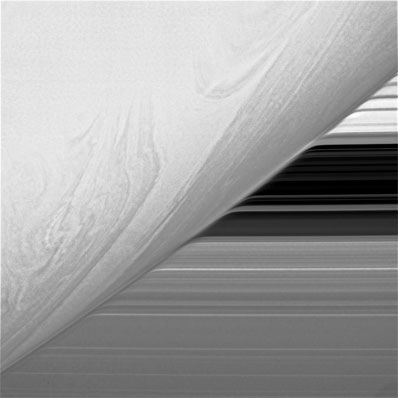
Spaceflight Now +

|

|

|

|

Premium video content for our Spaceflight Now Plus subscribers.

Shuttle tank returned
 Shuttle fuel tank ET-119 is loaded onto a barge at Kennedy Space Center for the trip back to Lockheed Martin's Michoud Assembly Facility in New Orleans. The tank will be used in the investigation to determine why foam peeled away from Discovery's tank on STS-114 in July. Shuttle fuel tank ET-119 is loaded onto a barge at Kennedy Space Center for the trip back to Lockheed Martin's Michoud Assembly Facility in New Orleans. The tank will be used in the investigation to determine why foam peeled away from Discovery's tank on STS-114 in July.

 Full coverage Full coverage

Discovery ferried home
 Mounted atop a modified Boeing 747, space shuttle Discovery was ferried across the country from Edwards Air Force Base, California, to Kennedy Space Center, Florida. Mounted atop a modified Boeing 747, space shuttle Discovery was ferried across the country from Edwards Air Force Base, California, to Kennedy Space Center, Florida.

 Full coverage Full coverage

Delta 4 launch delayed
 Launch of the GOES-N weather observatory aboard a Boeing Delta 4 rocket is postponed at Cape Canaveral, Florida. Launch of the GOES-N weather observatory aboard a Boeing Delta 4 rocket is postponed at Cape Canaveral, Florida.

 Full coverage Full coverage

Mars probe leaves Earth
 The Mars Reconnaissance Orbiter lifts off aboard a Lockheed Martin Atlas 5 rocket from Cape Canaveral's Complex 41. The Mars Reconnaissance Orbiter lifts off aboard a Lockheed Martin Atlas 5 rocket from Cape Canaveral's Complex 41.

 Full coverage Full coverage

Shuttle delayed to 2006
 NASA Administrator Mike Griffin and Associate Administrator for Space Operations Bill Gerstenmaier hold a news conference from Agency Headquarters in Washington on August 18 to announce a delay in the next shuttle flight from September to next March. (38min 02sec) NASA Administrator Mike Griffin and Associate Administrator for Space Operations Bill Gerstenmaier hold a news conference from Agency Headquarters in Washington on August 18 to announce a delay in the next shuttle flight from September to next March. (38min 02sec)

 Play video: Play video:
Dial-up | Broadband 1 & 2

 Download audio: Download audio:
MP3 file

Launch pad demolition
 Explosives topple the abandoned Complex 13 mobile service tower at Cape Canaveral Air Force Station. This video was shot from the blockhouse roof at neighboring Complex 14 where John Glenn was launched in 1962. Explosives topple the abandoned Complex 13 mobile service tower at Cape Canaveral Air Force Station. This video was shot from the blockhouse roof at neighboring Complex 14 where John Glenn was launched in 1962.

 Play video: Play video:
Full view | Close-up

 Become a subscriber Become a subscriber
 More video More video

|

|

|

|
|

|

Saturn's atmospheric illusion
CASSINI PHOTO RELEASE
Posted: August 26, 2005

Credit: NASA/JPL/Space Science Institute
Download larger image version here
|
Believe it or not, this extreme close-up of Saturn's swirling clouds was acquired from more than one million kilometers (621,370 miles) from the gas giant planet. The rings' image is severely bent by atmospheric refraction as they pass behind the planet.
The dark region in the rings is the 4,800-kilometer-wide (2,980 mile) Cassini Division.
The image was taken in visible light with the Cassini spacecraft narrow-angle camera at a distance of approximately 1 million kilometers (600,000 miles) from Saturn. The image scale is 6 kilometers (4 miles) per pixel.
The Cassini-Huygens mission is a cooperative project of NASA, the European Space Agency and the Italian Space Agency. The Jet Propulsion Laboratory, a division of the California Institute of Technology in Pasadena, manages the mission for NASA's Science Mission Directorate, Washington, D.C. The Cassini orbiter and its two onboard cameras were designed, developed and assembled at JPL. The imaging team is based at the Space Science Institute, Boulder, Colo.
|

|

|

|
|



